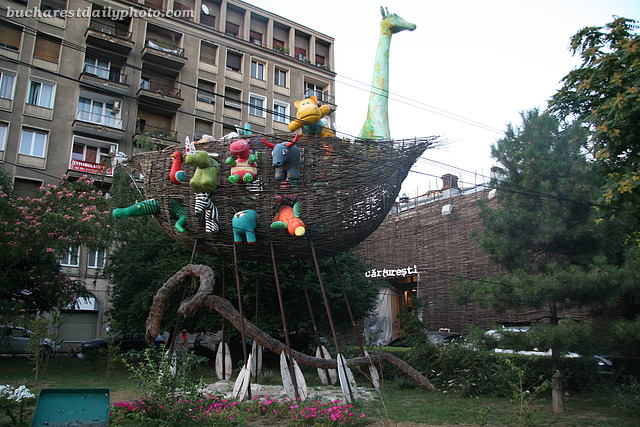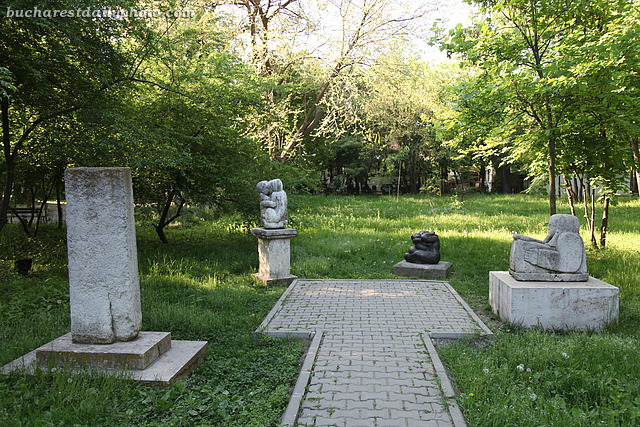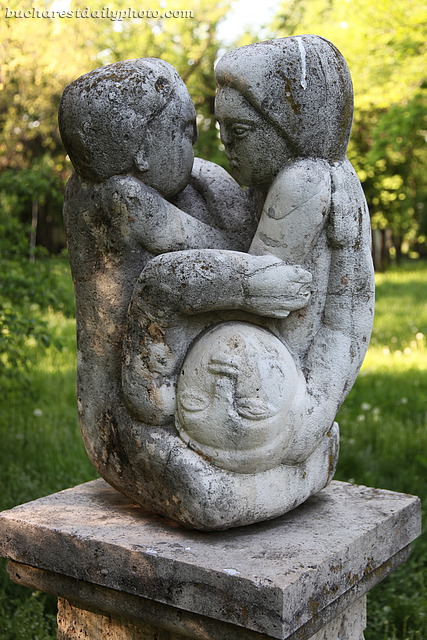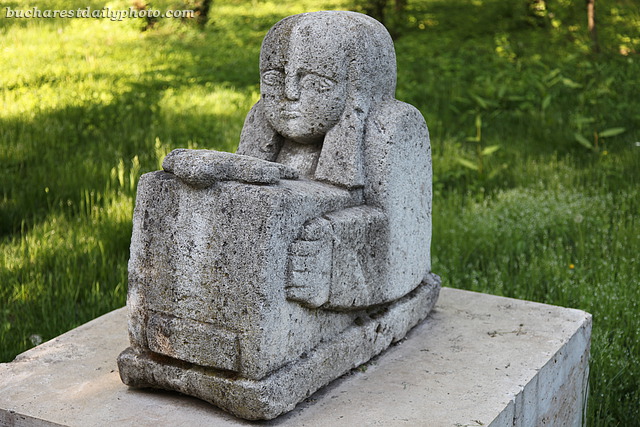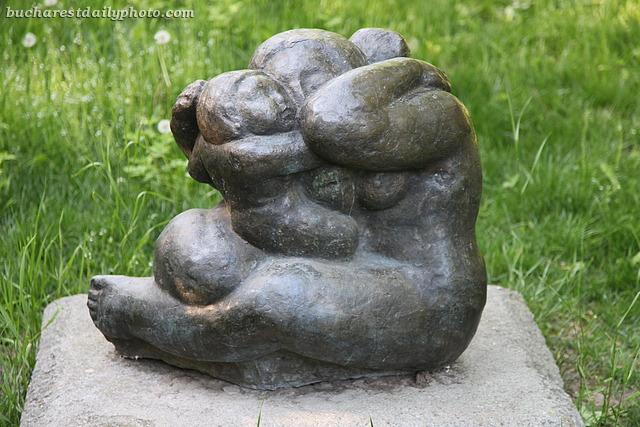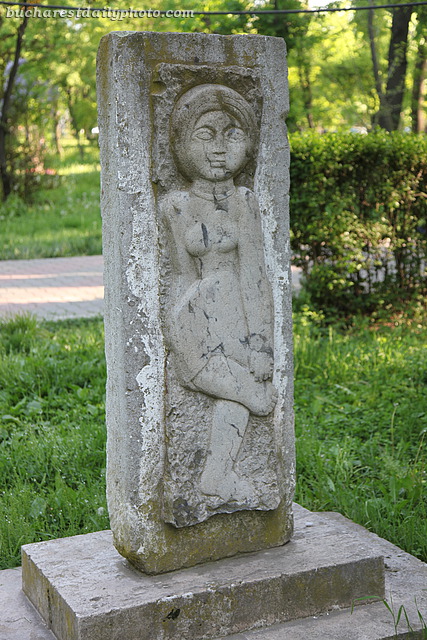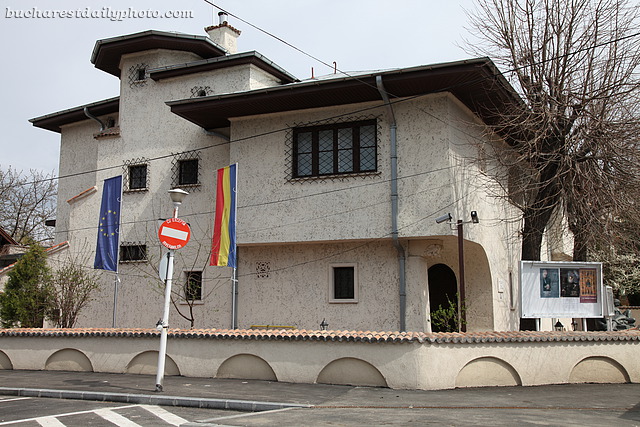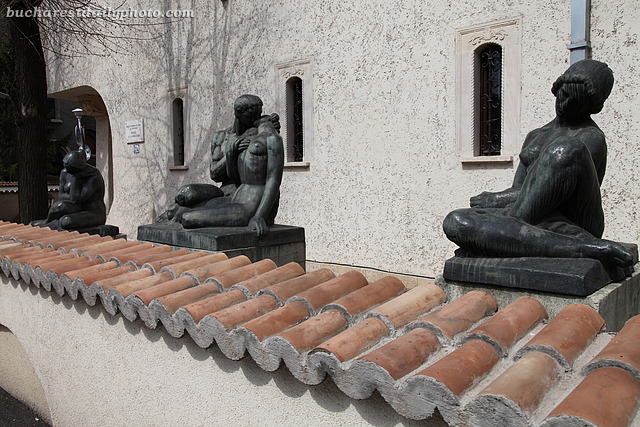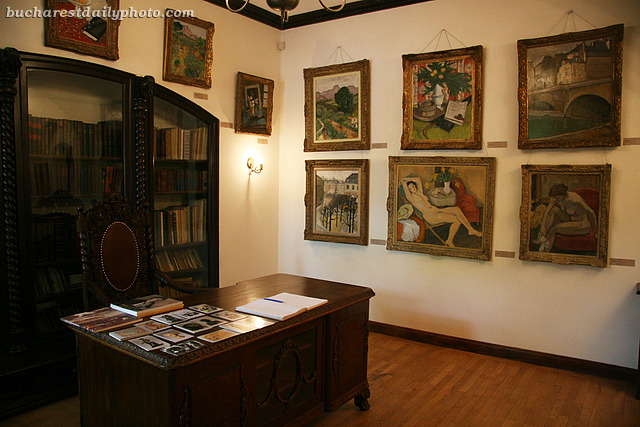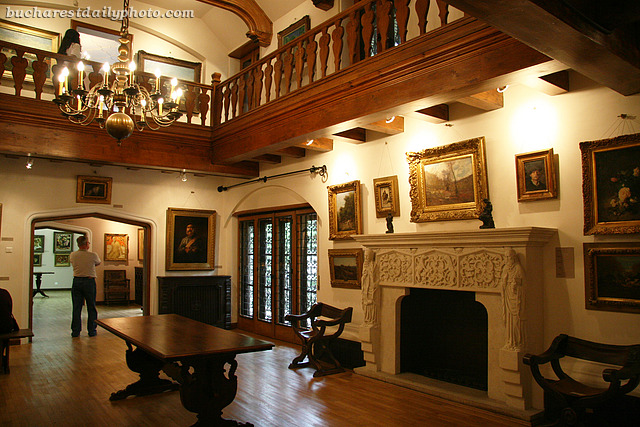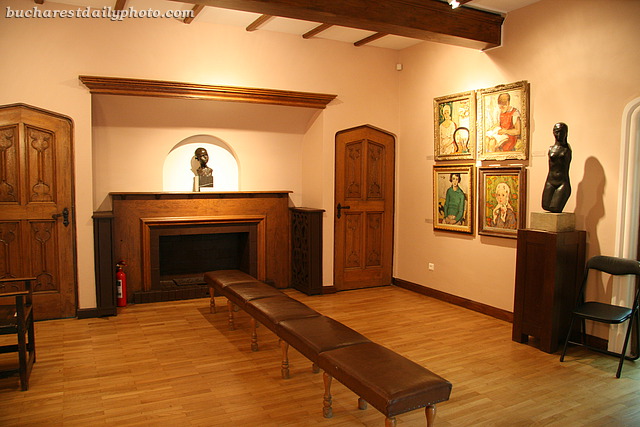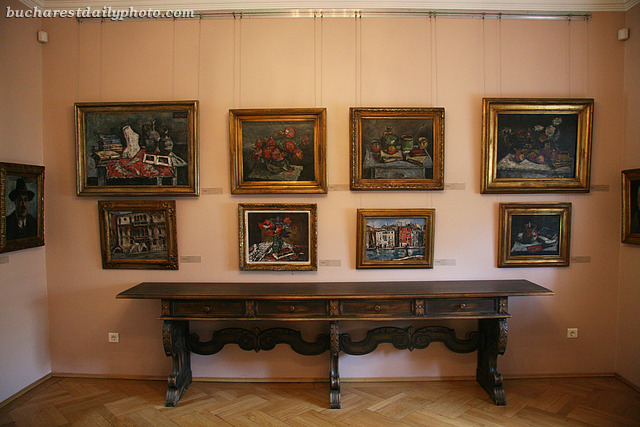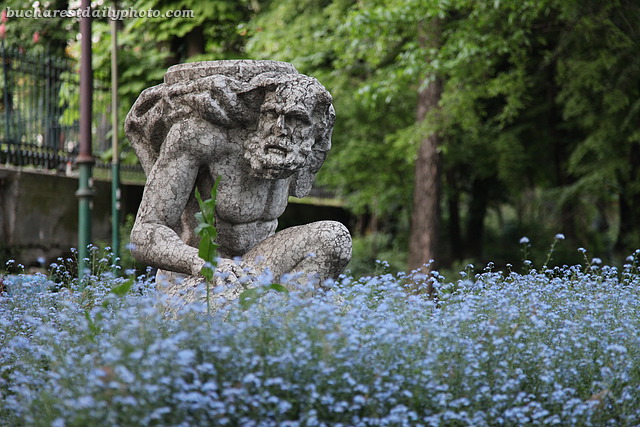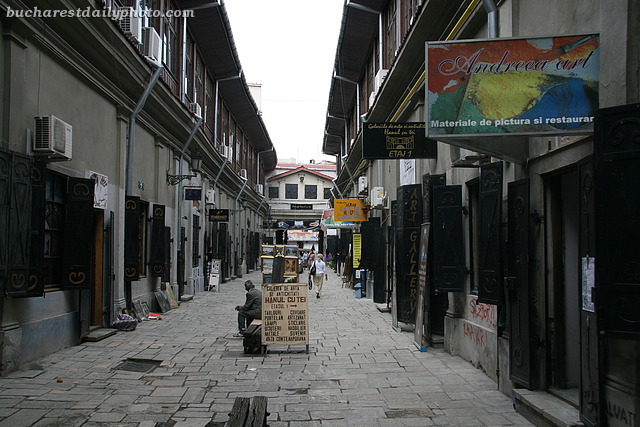Today’s photographs show four sculptures by George Apostu, grouped in Kiseleff Park. Apostu (1934 – 1986) was one of the most famous Romanian sculptors of the 20th century, being often compared with Constantin Brâncuşi.
Krikor Zambaccian (1889 – 1962) was a wealthy Armenian businessman and a lover of fine arts, who over the course of his life assembled a great art collection. În 1930 he asked architect C.D. Galin to design a house that will be used as living quarters as well as a museum for the art collection. In 1942 when the house was ready, Zambaccian opened his collection for public view once a week. The Zambaccian Museum was inaugurated in 1947 when Zambaccian donated his collection and the house to the Romanian state. The donation papers included the condition that the collection will remain in the house but in 1977 after the big earthquake the communist state moved the collection to the Art Collections Museum, citing imaginary concerns about the building’s structure. În 1992, after the fall of communism, the collection was returned to the house and the museum reopened. Most of the works are by Romanian artists (Nicolae Grigorescu, Ioan Andreescu, Ştefan Luchian, Jean Al. Steriadi, Gheorghe Petraşcu, Nicolae Tonitza, Nicolae Dărăscu, Theodor Pallady, Iosif Iser, Corneliu Baba, to name a few) starting with mid-19th century to the mid-20th century. There are also a few paintings by French artists like Delacroix, Renoir, Pissarro, Sisley, Cézanne etc. When I visited there were only 5 or 6 more visitors, so it feels like having the place to yourself. I can only imagine how it was to be living there.
Today is Theme Day at the City Daily Photo community, a monthly event that happens the first day of every month, when all participating blogs will post a picture that relates to the theme day’s description. Today’s theme is: Statues. Click here to view thumbnails for all participants
I had great plans for this theme day. I was to go and photograph some statues that would fit in both with theme day and with the May Day aka International Workers’ Day (which celebrates the legal establishment of the 8-hour working day, something that we today hold as a given but which wasn’t always so). I know a few statues in Bucharest that can be used to express both these ideas. But … I got stuck in the house with a bad cold so instead of what I planned I’m giving you Atlas, sitting among flowers in Cişmigiu Park. The only thing I’m not sure about is if this qualifies as a statue or it’s better defined as a sculpture.
And since I mentioned The Linden Tree Inn (Hanul cu Tei in Romanian) yesterday, I decided to tell you a few more words about it and post a picture of the inner courtyard. Bucharest was once full of places like this one, where travelers could enjoy a meal and a drink and secure shelter for the night. Unfortunately many of the old inns have dissapearead or are in ruin. Even though The Linden Tree Inn changed its destination and today it houses an art gallery, you can still get a feel of the 19th century atmosphere. The inner courtyard links Lipscani street with Blănari street. For a bit of history, it was built in 1833-1834 by two merchants, Anastasie Hagi Gheorghe Polizu and Ştefan Popovici. Each one of them had 14 shops on one side of the courtyard. Nowadays the ground floor is home to many art galleries selling paintings and antiques, art supplies stores and a cellar bar. The upper floor is worked in wood and covered by glass pannels as was typical at the time. It was restored between the years 1969-1973.
